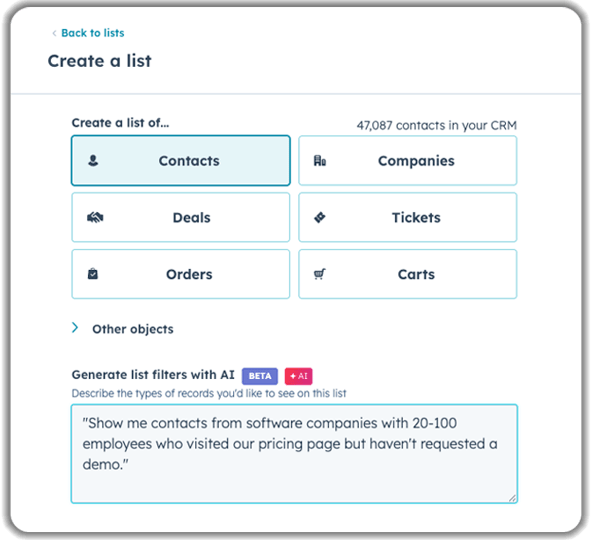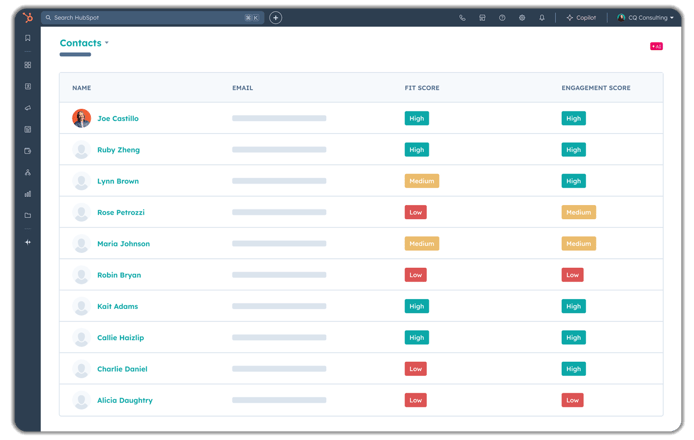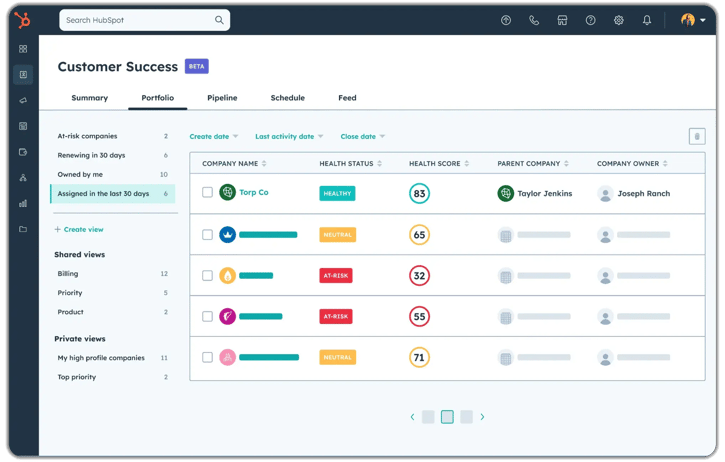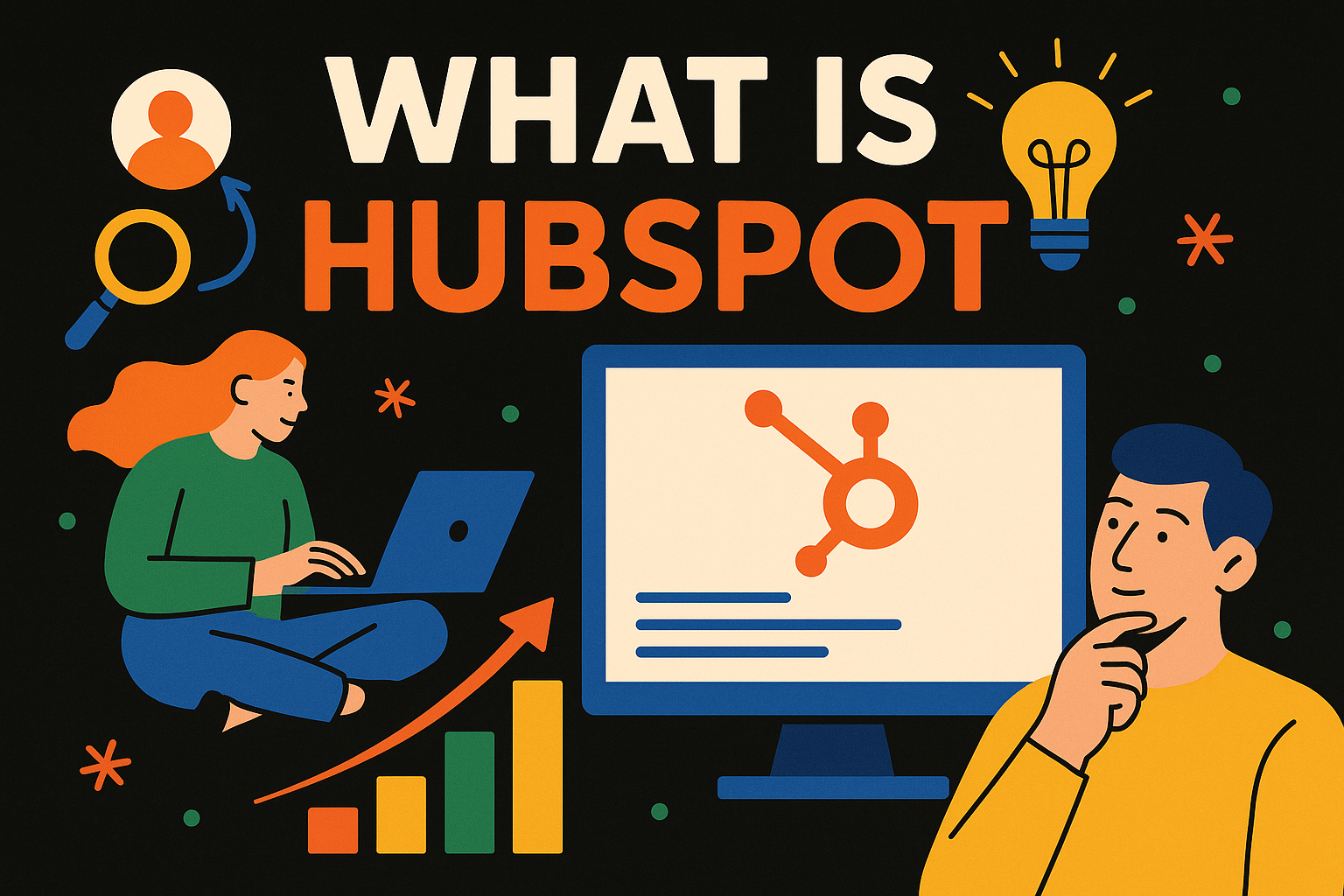It's been six months (or more) since your initial HubSpot set up... you're staring at unclear reports and messy data that make you question whether you wasted money on another platform that promised everything but only delivered confusion.
Most businesses, who never see ROI from HubSpot, treat their contact database like a junk drawer. They stuff everything in there, hope for the best, and wonder why their marketing campaigns don't perform.
On the other hand, successful companies have a strategy for contact management. Helping them make HubSpot their biggest marketing asset. Here's how they do it...
This video is part of our FREE Marketing Hub Masterclass — an 8-chapter series designed to take you from zero to Marketing Hub master. Subscribe to our YouTube channel so you don’t miss a single episode!
What You'll Get Out of These HubSpot Features
If you're reading this, you're probably dealing with:
- Marketing campaigns with poor delivery and open rates
- Sales complaining about "bad leads"
- Unhelpful HubSpot reports that look impressive but helpful metrics
- Using >20% of HubSpot's power but you don't have the time to figure it out.
If you feel like this, you're not alone!
Keep reading to understand how to manage your Database for Marketing success...
Why Contact Management Makes or Breaks Your HubSpot ROI
Think of your contact database as the engine of your marketing machine. When it's clean and properly segmented, everything runs smoothly. When it's a mess, you're essentially trying to run on contaminated fuel.
Here's what happens with poor contact management:
- Wasted Ad Spend: You're targeting the wrong people with the wrong message.
- Low Engagement: Generic campaigns get ignored.
- Sales Friction: Your team wastes time on unqualified leads.
- Compliance Risks: Sending emails to unsubscribed contacts can hurt deliverability.
- Inflated Costs: You're paying for contacts who'll never buy.
What good contact management delivers:
- Precise Targeting: Send the right message to the right person at the right time.
- Higher Engagement: Personalized campaigns that people actually open and click.
- Better Leads: Sales gets prospects who are ready to buy.
- Lower Costs: Stop paying for contacts who aren't prospects.
- Scalable Growth: Your marketing gets more effective as your database grows.
The 4-Step Contact Management Strategy That Actually Works
Step 1: Audit and Clean Your Existing Database
Start with a contact audit. This isn't glamorous work, but it works.
What to look for:
- Bounced emails (mark as non-marketing).
- Customers who should be in a different lifecycle stage.
- Incomplete contact information.
- Duplicate records.
- (B2B) Personal email addresses that should be professional ones.
Action items:
- Export all contacts and review in spreadsheet format.
- Identify and merge duplicate records.
- Update contact properties with missing information.
- Set bounced/unsubscribed contacts to "non-marketing."
- Remove obviously bad data (test@test.com, etc.).
Step 2: Implement Smart Contact Properties
Standard HubSpot properties are fine, but custom properties are where you gain a competitive advantage.
Essential custom properties for most businesses:
- Pain points or challenges
- Budget range
- Decision-making timeline
- Current solution they're using
- Company size or revenue range
Industry-specific examples:
Software Companies:
- Current tech stack
- Integration requirements
- User count
Construction/Contractors:
- Project type
- Property size
- Timeline for completion
Coaching/Consulting:
- Years in business
- Team size
- Growth goals
💡 Remember: Every custom property should serve a specific purpose in your marketing or sales process. Don't create properties just because you can!
Step 3: Create Dynamic Segmentation Lists
This is where contact management becomes contact strategy.
Start with these five core segments:
- Hot Prospects: High engagement, right fit, active in sales process
- Warm Leads: Some engagement, good fit, but not sales-ready
- Nurture Pool: Right fit, minimal engagement, needs education
- Customer Segments: Existing customers by type, size, or satisfaction
- Non-Prospects: Vendors, partners, unqualified leads
Advanced segmentation for higher ROI:
Instead of basic demographic segments, create behavior-based lists...
- "Visited pricing page 3+ times in last 30 days"
- "Downloaded multiple case studies but hasn't requested demo"
- "Opened last 5 emails but didn't click"
Step 4: Set Up Automated Contact Management
Manual contact management doesn't scale. Set up workflows to handle routine tasks automatically.
Essential automation workflows:
- Lead Scoring Workflow: Automatically score contacts based on fit and behavior
- List Management: Move contacts between segments based on actions
- Data Enrichment: Fill in missing information when possible
- Lifecycle Stage Updates: Progress contacts through your funnel automatically
Workflow example for service businesses:
- Contact downloads pricing guide → Add to "High Intent" list
- Contact visits team page → Increase lead score by 10
- Contact opens 5 emails without clicking → Move to "Re-engagement" campaign
- Contact books consultation → Alert sales team and remove from marketing lists
Latest HubSpot Updates That Improve Contact Management
HubSpot constantly releases features that make contact management easier. Here are the recent updates worth knowing about:
HubSpot AI: Powered List Building
HubSpot's
new List Assistant lets you describe the contacts you want in plain English instead of building complex filters. For example:
"Show me contacts from software companies with 20-100 employees who visited our pricing page but haven't requested a demo."
This saves hours of manual list building and reduces errors!

Enhanced Contact Lead Scoring
The
new predictive lead scoring uses machine learning to identify which contacts are most likely to convert. It analyzes patterns from your existing customers to score new contacts automatically.

Contact Health Monitoring
Customer Success Management tool now
flags contacts with poor data quality or engagement issues. This helps you proactively clean your database instead of reactively fixing problems.

HubSpot Best Practices and Mistakes to Avoid
Mistake #1: Treating All Contacts as Marketing Contacts
⚠️ The Problem: You're paying for vendors, customers, and unqualified leads as if they're prospects.
📈 The Fix: Regularly audit and set non-prospects to "non-marketing contact" status. This can significantly reduce HubSpot costs.
Mistake #2: Creating Too Many Custom Properties
⚠️ The Problem: Your team stops updating contact records because there are too many fields.
📈 The Fix: Start with 5-7 essential custom properties. Add more only when you have a specific use case and can ensure data quality.
Mistake #3: Ignoring Contact Lifecycle Stages
⚠️ The Problem: Sending "buy now" messages to people who just heard of you, or educational content to ready-to-buy prospects.
📈 The Fix: Map your customer journey and move contacts through lifecycle stages based on behavior, not just time.
Mistake #4: Set-and-Forget List Management
⚠️ The Problem: Static lists become stale and irrelevant over time.
📈 The Fix: Use active lists that update automatically based on current behavior and properties.
Mistake #5: Not Aligning Sales and Marketing on Contact Definitions
⚠️ The Problem: Marketing thinks they're sending qualified leads; sales thinks they're getting garbage.
📈 The Fix: Create shared definitions for lead qualification and lifecycle stages. Both teams should agree on what makes a "marketing qualified lead."
Mastering Marketing HubSpot Features
Contact management isn't just about organizing data—it's about building a foundation for sustainable growth. Don't try to fix everything at once. Most businesses see noticeable improvements within 30 days of implementing proper contact management practices.
Here's what happens once your foundation is solid: you're ready to flip the switch on HubSpot's real power. With clean data and proper segmentation in place, you can finally use HubSpot's core inbound tools—landing pages, forms, email workflows, and lead scoring—the way they were designed to work. Think of contact management as building the rails. Once they're laid properly, your inbound marketing train can pick up speed and deliver qualified leads exactly where they need to go.






